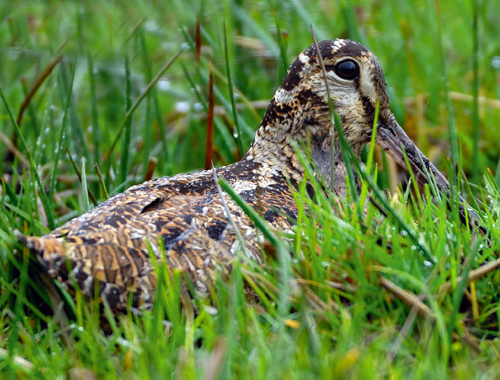Woodcock migration: Birds head for their breeding grounds

Despite a delayed start to the spring woodcock migration, birds tagged by the Game & Wildlife Conservation Trust’s Woodcock Watch have made up time and reached their summer nesting spots.
Three of the birds have travelled as far as Siberia. Crugith started in South Cornwall and arrived in the Pirovsky District on 2 June, covering 7,068km; Monkey also started in South Cornwall and covered a staggering 9,834km to arrive in the Yeniseysky District on 3 June; and Woody II, the bird sponsored by Shooting Times, started in Norfolk to arrive in Evenkiyskiy Rayon on 4 June, covering 6,919km.
Speedy, who made the shortest migration from the Highlands to Norway, still covered more than 1,000km.
Dr Andrew Hoodless, who is leading the project, told Shooting Times: “It was obvious, not only from our tagged woodcock, but from reports around the country, that spring migration was delayed by the unusually cold weather in March.”
“On average, our 2013 batch of satellite-tagged woodcock were 10 days later setting off than the 2012 batch, departing in early April rather than during the third week of March.”
“Clearly, the birds had no option but to wait until temperatures rose, but it is interesting that most of them were able to make up time on migration to arrive at their breeding grounds at a similar time to 2012. For instance, Rebecca, a bird tagged in Wales, reached her breeding site just west of Moscow on 22 April, at least two days earlier than in 2012.”
“But Monkey, with further to travel to his breeding site in central Siberia, arrived on 12 May, seven days later than in 2012.”
“In Russia, where woodcock have a shorter breeding season than in the UK, it is important that the birds arrive and commence breeding as soon as the snow has melted.”
 The birds have flown long distances to reach their summer breeding grounds.
The birds have flown long distances to reach their summer breeding grounds.
Dr Hoodless is also monitoring woodcock that breed in Britain, where the birds were also late in starting the rode: “In Hampshire in most years, the odd bird has started by about 24 February, but this year there was no activity until mid-March.”
“Some of the earliest counts in our National Woodcock Survey were low, probably owing to the cold showery weather and we are hoping that some better counts will be recorded during June, the final month of the survey.”
Woodcock Watch currently has 18 tagged birds. Sponsoring a satellite-tracked bird costs £36 a year, which covers the cost of downloading the data from a satellite one day every month, though you can check your bird’s progress daily.
For more information, or to sponsor a bird, email woodcock@gwct.org.uk or Tel: 01425 652381.
Say what you think in the Shooting UK forums!
Woodcock migration: Birds head for their summer breeding grounds








